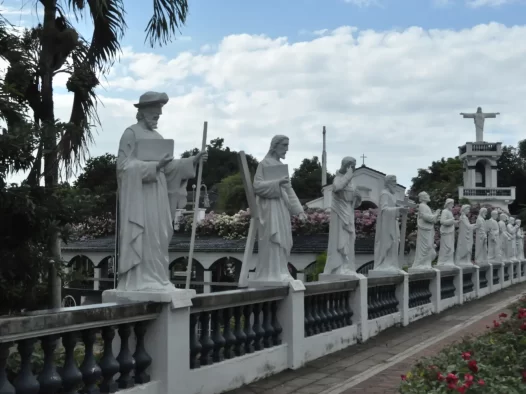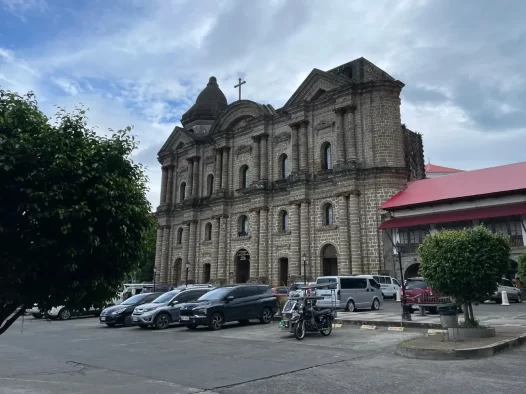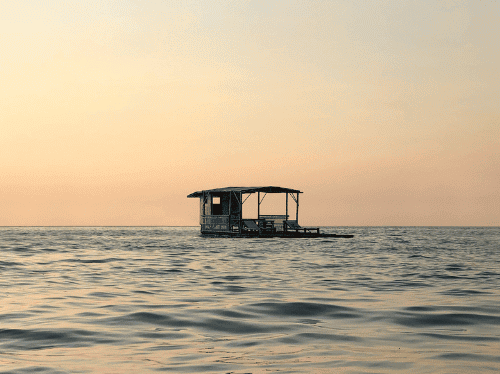Talisay
Talisay is a municipality located in the province of Batangas in the Philippines. It is situated on the northern shores of Taal Lake, making it an ideal starting point for exploring Taal Volcano and the surrounding area.
The town of Talisay is known for its scenic beauty, with picturesque views of the lake and the iconic Taal Volcano rising from its waters. It offers a peaceful and tranquil atmosphere, attracting visitors who seek relaxation and a close connection with nature.
History and Heritage
During the period of Spanish administration in the Philippines, the area known as Talisay (which did not have a definitive name at the time) was one of the undeveloped barrios of Tanauan Municipality. However, when Tanauan was relocated to its current site, the area became a barrio of Taal.
Initially, there was little attention given to Talisay due to its sparse population. However, people from Taal and Tanauan began to visit the area and discovered its fertile land, suitable for cultivating high-yielding crops such as sugarcane, rice, and corn — three of the most important products of the time.
With this realization, the population of Talisay started to grow, eventually reaching a density that prompted the Spanish government to establish a parish and assign a priest to cater to the residents and promote Christianity. Subsequently, a temporary church was constructed at the center of the barrio, using locally available lightweight materials.
A predicament arose when the church bell arrived, as the structure was unable to support its weight. In response, the priest decided to hang the church bell on a towering Talisay tree located in the churchyard. When the bell was rung for the first time, some people were startled while others, driven by curiosity, sought the source of the sound and discovered it was emanating from the majestic Talisay tree.
As the practice of attending Holy Mass on Sundays became established, whenever curious individuals inquired about the destination of the churchgoers, they simply replied, “Sa may Talisay” (near the Talisay tree). Over time, the association between the place and the tree became inseparable, and when the barrio eventually attained township status, it was fittingly named Talisay.
In 1869, Talisay was officially recognized as a Municipio and has since celebrated its founding anniversary every 10th of February.
Climate
Talisay municipality in the Philippines experiences distinct seasons: dry and wet. The wet season occurs from May to October and is characterized by increased rainfall, averaging 29.5 centimeters. The wind tends to blow from the southwest and northeast directions at an average speed of 7.1 knots. This season is also affected by typhoons originating from Eastern Luzon, bringing stronger winds and heavy cloud cover. Flooding can occur due to the significant amount of rainfall during this time. The wet season is also marked by colder temperatures, which can negatively impact people’s health.
On the other hand, the dry season spans from November to April.
Topography
A rugged and undulating terrain is common on all slopes from the Tagaytay Ridge down to the lake below. Talisay is situated along the lakefront and its topography is longitudinal traversing many minor ridges and drainage basins (valleys). The terrain of Talisay can be best described as having a gently rolling to steeping undulating landform. Most of the lakefront areas are generally flat except for the westernmost barangay, Sampaloc where the drop is quite abrupt. The highest elevation, rising more than 560 meters, is located near the Tagaytay City boundary in northern Quiling. The slope of the area ranges from 0% to more than 50% slopes. About a quarter or 1,652 hectares of the municipality falls within the 12% maximum gradient for roads. About half or approximately 1, 949 hectares are within the maximum economically buildable slope range of 18%.
If you prefer a hassle-free trip, you can rent a car or hire a private vehicle for more convenience and flexibility. Public transportation, such as buses and jeepneys, is also available and can be a more budget-friendly option.
Batangas: Where history, beauty, and resilience converge, creating a tapestry of captivating stories and unforgettable moments.
Karakol Festival
The Karakol Festival holds significant importance in the town of Talisay, as it involves a dance dedicated to their patron saint, San Guillermo. Originally, only the elders participated in this religious dance, but over the years, even the young Taliseños have joined in. Clad in various costumes, they gracefully dance in praise of San Guillermo. The festival is a collective effort involving the local government, as well as other government and non-government organizations. Held during the month of February, the Karakol Festival is a vibrant celebration of devotion and unity in Talisay.



Local Attractions
Batangas in the Philippines offers a range of local attractions that cater to various interests. These are just a few of the attractions you can explore in Batangas. Whether you’re interested in history, nature, or relaxation, the city offers something for everyone.
Getting Around

Buses
Buses provide transportation for longer distances, connecting Batangas with other regions and provinces. These buses have designated terminals and offer a more comfortable option for longer journeys.

Jeepneys
Jeepneys are a staple mode of public transportation in the Philippines. They are colorful, elongated jeeps that can carry multiple passengers. Jeepneys follow specific routes and have fixed fares.

Tricycles
These motorized vehicles consist of a motorcycle with a sidecar, which can accommodate around 3 to 4 passengers. Tricycles are commonly used for short trips within the city, and fares are usually negotiable.




